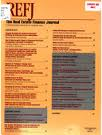 UNRAVELING THE MYSTERY OF RAW LAND EXPOSES ITS VALUE
UNRAVELING THE MYSTERY OF RAW LAND EXPOSES ITS VALUE
David McSwain, The Hoffman Company
Of all the types of real estate collecting in bank portfolios as a result of the current housing meltdown, none has given foreclosing lenders bigger headaches than development-grade land.
The difficulty begins with a very basic question: What is the value of raw land?
Widely accepted methods exist for arriving at the value of a house, an office building, a retail center or a farm. But in the case of undeveloped or partially developed land, value can be nearly impossible to ascertain.
Whether in raw form, improved with grading and utilities or simply mapped, raw land comes with a whole set of unique and complex valuation problems that vex even the most seasoned real-estate experts.
Some of the trickiest issues include a paucity of readily available comparable properties, absence of a revenue stream, unclear land-use and entitlements, incomplete improvements and longer due-diligence periods for buyers.
So where can that leave the lender who may not have the same level of real-estate and development expertise? In a word, overwhelmed. But there are ways to navigate out of the thicket – if one begins by fully understanding the obstacles.
Start by considering the lack of “comps,” to use the real-estate parlance. Anyone who’s ever sold a house knows how easy it is to find an abundance of recent sales involving similar properties in similar neighborhoods.
Not so with raw land. There are drastic differences from parcel to parcel in size, topography, physical shape and permitted uses (zoning). Because any given piece of development land tends to be more unique, it’s hard to find comparable sales for a value estimate – let alone rely on them. And that problem is only magnified in a slow market.
Another common basis for valuing property is by considering the income it produces. Commercial buildings of all kinds and even farm land have the advantage of a revenue stream. So even when one commercial property isn’t really comparable to another in physical terms, the existence of a revenue stream helps determine a value via the Cap-Rate for the asset being considered.
Raw land or land that is in the process of being entitled or developed, on the other hand, has no current income source. The potential payoff is a way down the road, and depends on many variables.
This makes the estimating of a value considerably more difficult. The lack of immediate revenue also reduces the overall value as there is considerably more risk involved and specialized talent needed to complete the necessary improvements before the land can become commercially viable.
Things can get even more complicated depending on the precise legal status of the land and how well its permitted uses have been defined. Raw land that lacks an approved site plan, tentative map or proper zoning comes with more questions than answers.
A raw, 40-acre parcel that has been approved for 160 homes has a value based on the future value of that specific number of homes. The same 40-acre parcel with no approvals has only question marks. What if the local municipality will only approve 80 homes? What if local officials will approve only 40 homes? What if they won’t approve anything because of recently discovered endangered species living on the land?
Even if the parcel has all the needed approvals in place and has already been partially developed, other factors can come into play. These include work-related bonds, maintenance of work completed, liability and insurance issues for partially or fully completed structures and cost estimates to complete someone else’s work.
There is also a much smaller buyer pool for assets that have been partially built. A partially constructed retail strip for example, excludes most all buyers except those able and experienced to build a retail strip mall.
Questions such as these pose issues for buyers as well as sellers. Which is why owners taking development land to market should learn to expect another common feature of these deals — protracted due-diligence periods.
Because values for residential or commercial properties are more easily settled upon, the time needed for a buyer to determine what they will pay is relatively short.
But with development land, the time a buyer needs to explore all the development possibilities of a parcel can be considerable. Many different surveys of the land are involved in determining possible uses and the potential expenses related to development. These surveys along with determining what the local municipality will and will not allow can require months of work for the buyer.
So it naturally takes longer for a buyer to commit to a land purchase, which frustrates lenders not experienced with development land. Often lenders are forced to discount a land asset considerably, merely because of an unwillingness or inability to extend an appropriate time period for due diligence.
It’s easy to grow discouraged in the face of such realities.
But doing nothing or closing one’s eyes to the complexities of the market doesn’t move the property owner closer to getting an idea of value. Problems don’t just go away by themselves. Gaining the knowledge needed in the workout process only comes by actively seeking the appropriate information. And there are four relatively easy and inexpensive initial steps to take toward finding a solution for any particular piece of property.
Step 1: Become familiar with the asset. A current appraisal is all that is needed to understand the basics of a piece of property. Read the appraisal critically. Understand the assumptions and information sources the appraiser used. Know how and why the appraiser came to his value conclusions. But do not rely solely on an appraisal. An appraisal reveals what was happening in the market months ago — and is basically just a snapshot of the past. To rely only on this opinion of value or a similar type of consultant’s report limits the owner’s perception of the market and may lead to an erroneous value judgment.
Step 2: Get in touch with people involved with current transactions. Talk with those who are on the front lines in the market place and familiar with similar property types. Understand how offers, whether accepted or not, are being written and for how much. Learn what deals are in contract and find out about deals that may have recently fallen out of contract and why. Understand the market’s absorption and supply. How much supply exists of this asset type? What’s the demand? Simply having some idea of how soon the development in question can be sold out, rented out or leased up can speak volumes about value.
Step 3: Market the property immediately, or as soon as is reasonably possible. Exposure to the market, under guidance from a competent and experienced broker, will bring the seller valuable site and market information, typically at no cost. In addition a real estate broker will generate offers for the property. Multiple offers are the gold standard in knowing the true market value for any property. A small stack of offers is the best and most efficient way to find out what the market thinks about a specific asset. Do not wait for the market to come back before thinking about selling. The two previous downturns in California each had a seven-year lapse between the top of the market and the return to that ‘top’ value. Many analysts argue over what the graphed shape of the current cycle will be: A ‘U’? A ‘V’? Or a ‘W’? Based on the last two cycles, it will probably be more in the shape of a canoe. So if this cycle is anything like past cycles, it is better to act sooner than later.
Step 4: Build a longer due-diligence period into the marketing plan from the very beginning. As buyers emerge, be prepared to give as many as 60 to 90 days to perform a thorough due diligence. What the buyer discovers about the site can clearly define the development potential and possibly increase the value. For land that hasn’t been entitled, consider an extended escrow of 12 to 18 months if possible. This is the best loss-mitigation tactic that can be employed with land. Allowing the buyer to get the necessary approvals that define the precise use removes all doubt and ultimately increases value. However, the seller should not spend a lot of time and money duplicating the due-diligence effort. A basic understanding of the property is all that is needed. Let the potential buyers expend the resources needed to understand the minutiae of development. For the seller, doing so would only mean getting bogged down with a multitude of consultants and engineers that can create ‘analysis paralysis’ with conclusions that end up being not much better than guesses at what the site value may be.
David McSwain is a broker associate specializing in distressed, bank-owned properties for The Hoffman Company, a leading land brokerage firm in Southern California. Hoffman’s brokers have closed more than 1,100 real estate transactions for a total $4 billion since the company’s inception in 1978 and have booked an average of more than $500 million annually over the past five years. The Hoffman Company represents land owners of all property types, including residential, multi-family, commercial and industrial sites. For more information, call 949-553-2020 or visit www.hoffmanland.com.


